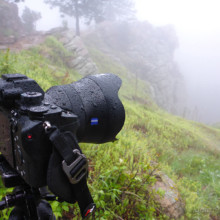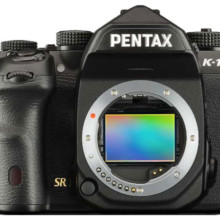Large Sensor Compacts
Somewhere between the convenience of the smartphone and image quality of a full frame DSLR is a growing category of camera called large sensor compacts. Smartphones have all but killed the compact camera due to their convenience and rapidly improving photographic abilities. But there are two things engineers just can’t cram into a smartphone chassis, a large sensor and a corresponding lens to match. Enter the large sensor compact, a category of camera that is somewhat pocketable, yet has a sensor that is many times the size of that found in smartphones. The new iPhone 7, for instance, has a 1/3 inch main sensor which translates to approximately 29 square millimeters of surface area. By contrast, the emerging category of large sensor compacts typically use a 1 inch Sony sensor with a surface area of 116square millimeters, or 4x as large as the new iPhone. And if you’ve been following the rapid development of digital cameras over the last two decades, you know that sensor size is a major factor in image quality.
To date, there have been four players in the market segment originally created by Sony with the introduction of the RX100 camera. Sony is now on the forth generation of the the RX100 series. Canon just released the well received second generation G7X II. Nikon has announced but not yet released the DL24-85 and DL18-50, a pair of large sensor compacts. And Panasonic offers the ZS100 camera which distinguishes itself by having a 10x optical zoom. Panasonic has also just announced a new camera in their enthusiast line, the Lumix LX10, that fits neatly in this category. The LX10 shares many similarities with the Sony RX100 IV, including the sensor, a similarly spec’d lens, and 4K video. See the announcement below for more details on the LX10 and two other new cameras by Panasonic.
The popularity of this growing segment of the camera market is due to the small form factor and high image quality. For many it will be the camera they reach for when the image quality and lens limitations of a smartphone just doesn’t cut it. For some pros, having a pocketable large sensor camera is a viable option when the big camera needs to stay home. The increasing number of choices of large sensor compact cameras is a welcome result of the boom in smartphone photography.
Panasonic Camera Announcements
Source is B&H Photo Video via marketwired.com
Photography News: Panasonic Has Just Unleashed a Pair of Powerful Point-and-Shoots, the DMC-LX10 and DMC-FZ2500, That Feature a 20.1MP 1″ MOS Sensor and Advanced 4K Video Capabilities; Also, an SLR-Styled DMC-G85 Micro Four Thirds Mirrorless Camera Is Available With a 16MP Sensor and 5-Axis In-Body Image Stabilization
NEW YORK, NY–(Marketwired – September 15, 2016) – B&H is pleased to share Panasonic’s announcement of their latest mirrorless release, the DMC-G85, which brings a familiar set of features to a new form factor. This versatile Micro Four Thirds mirrorless model utilizes the 16MP Live MOS sensor to provide a sensitivity range up to ISO 25600, 6 fps shooting with continuous autofocus, and UHD 4K recording at 30p. This 4K ability enables the use of 4K Photo Modes, too, for shooting 8MP stills at 30 fps in three ways. Five-axis sensor-shift image stabilization limits camera shake for sharper results, and supports Dual I.S. when used in conjunction with select lenses which also feature IS, for more effective overall stabilization. The ergonomic design of the body incorporates a 2.36m-dot electronic viewfinder and a free-angle 3.0″ 1.04m-dot LCD touchscreen, and built-in Wi-Fi permits remote camera control and wireless image sharing with a mobile device. Adding to the potential of the G85 is an optional DMW-BGG1 Battery Grip, which holds two DMW-BLC12 battery packs for extended shooting time, and offers a second shutter-release button, AF/AE lock button, exposure-compensation button, and dual-control dials for more ergonomic vertical shooting.
Panasonic DMC-G85 Lumix Mirrorless Camera
The G85 will be available as a body only or in a kit with the Lumix G Vario 12-60mm f/3.5-5.6 ASPH. POWER O.I.S. lens.
Panasonic also announces the release of two powerful point-and-shoots, the DMC-LX10 and DMC-FZ2500. The Lumix DMC-LX10 characterizes itself with a large 1″, 20.1MP sensor, along with UHD 4K recording capabilities, a Leica 3x Vario-Summilux lens, and a 3.0″ 1.04m-dot tilting touchscreen. Sporting the same sensor, the Lumix DMC-FZ2500 is distinguished by a longer-reaching 20x Leica Vario-Elmarit lens and DCI 4K video recording, in addition to cine picture profiles for color-grading flexibility.
Looking more in-depth at the LX10, this sleek, pocketable camera sports a 20.1MP 1″ MOS sensor, which affords a high native sensitivity to ISO 12800, expandable to ISO 25600, and fast stills performance throughout the camera system for shooting up to 50 fps with an electronic shutter, 10 fps with a mechanical shutter, or 6 fps with continuous autofocus. UHD 4K video recording is also supported at 30p and 100 Mbps, along with Full HD 1080p/60, and the 4K capabilities further avail a trio of 4K Photo Modes for shooting 8MP stills at up to 30 fps. Balancing speed and sensitivity, a 3x zoom Leica DC Vario-Summilux f/1.4-2.8 lens is featured, which covers a 24-72mm equivalent focal-length range, and includes a series of aspherical and low-dispersion elements to minimize spherical and chromatic aberrations throughout the zoom range. Five-axis HYBRID O.I.S.+ image stabilization is also employed to reduce the appearance of camera shake when working in dim light, and built-in focus-stacking capabilities along with a Post Focus mode afford a pair of features to ensure sharply focused imagery. The compact body of the camera incorporates a 3.0″ 1.04m-dot LCD touchscreen, which tilts 180° upward for taking selfies. Built-in Wi-Fi is available too, for wireless image sharing and remote camera control from mobile devices.
A bit larger and a bit longer, Panasonic is introducing a second advanced compact camera, the FZ2500. This camera utilizes the same 20.1MP 1″ MOS sensor as the LX10, but optimizes video performance with the inclusion of DCI 4K video recording and a true 24 fps frame rate, in addition to more conventional UHD 4K and Full HD recording modes. Also benefitting videographers, this camera includes Panasonic’s CINELIKE D and CINELIKE V picture profiles for better grading capabilities, and V-Log L can be added via an optional upgrade. Additionally, high bit rate recording up to 200 Mbps is supported in both MP4 and MOV formats; video can be output over HDMI with a 4:2:2 10-bit signal; there is no recording duration limit; and a built-in ND filter can be used for enhanced control over exposure settings while recording.
More than just a video-optimized camera, however, the FZ2500 also sports a slew of specs for stills and movie users, such as a 50 fps continuous shooting rate with an electronic shutter, or 12 fps with a mechanical shutter, and an expanded sensitivity range of up to ISO 25600 for working in dim light. The built-in 20x Leica DC Vario-Elmarit f/2.8-4.5 lens covers a 24-480mm equivalent focal-length range, and 5-axis HYBRID O.I.S.+ controls the effects of camera shake for sharper handheld shooting. A free-angle 3.0″ 1.04m-dot LCD touchscreen permits intuitive control and viewing ease from a variety of working positions, and a 2.36m-dot electronic viewfinder is also available. Additionally, built-in Wi-Fi also supports wireless image sharing and remote camera control.
B&H Photo is an authorized Panasonic dealer, with the most up-to-date Panasonic product information, product pricing and promotional offers.






[…] Source: Marketwired via Naturewindowsphoto […]
[…] Nature Windows Photo […]